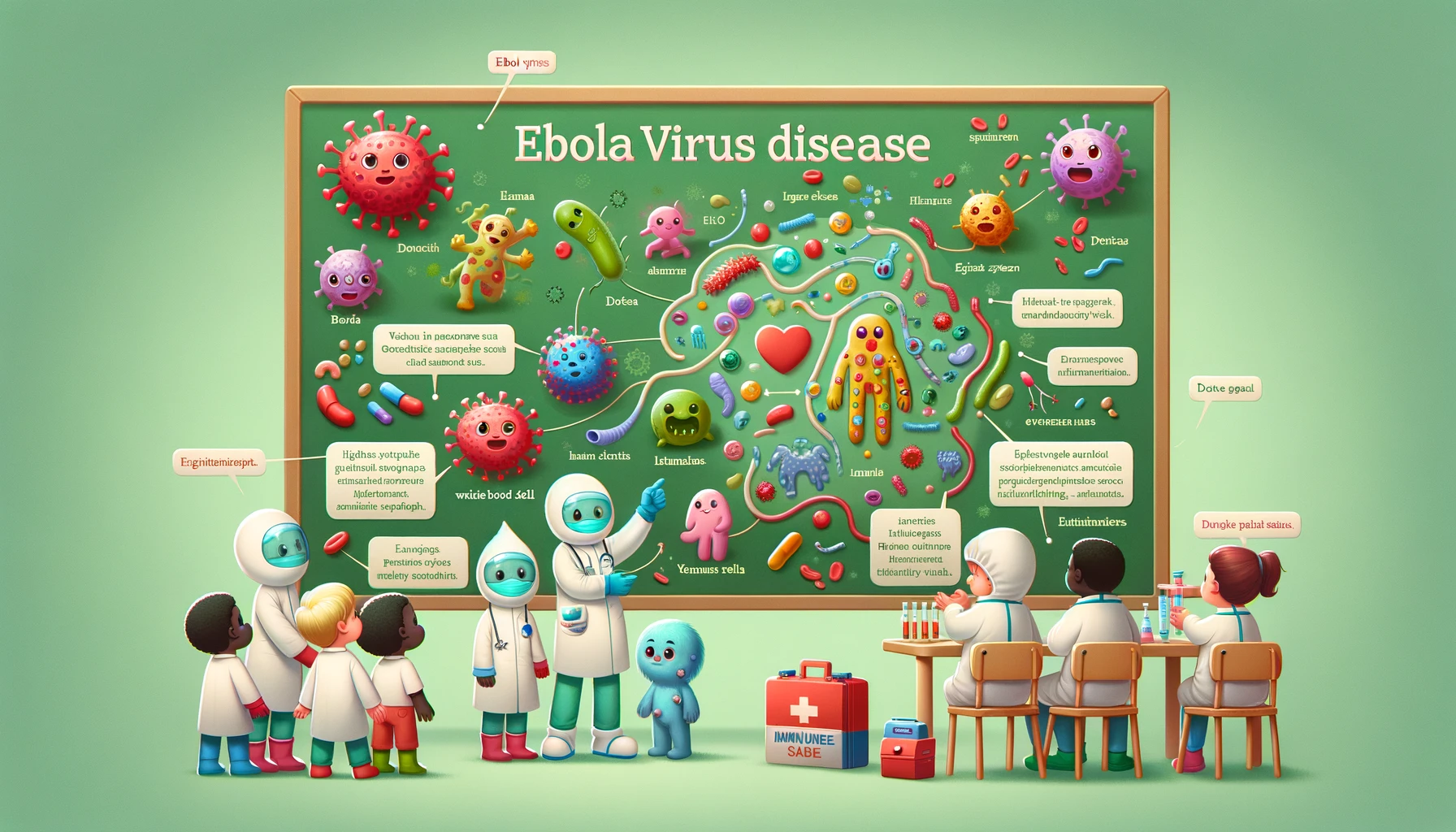Understanding Ebola Virus Disease: Causes, Symptoms, and Treatments
Understanding Ebola Virus Disease: Causes, Symptoms, and Treatments
Table of Contents
- Introduction to Ebola Virus Disease
- Causes of Ebola Virus Disease
- Symptoms of Ebola Virus Disease
- Risk Factors for Ebola Virus Disease
- Diagnosis of Ebola Virus Disease
- Treatment of Ebola Virus Disease
- Prevention Strategies
- Conclusion
- References
Understanding Ebola Virus Disease: Causes, Symptoms, and Treatments
Introduction to Ebola Virus Disease Ebola Virus Disease (EVD) is a severe, often fatal illness caused by the Ebola virus. It primarily occurs in Africa and has been responsible for several major outbreaks. Understanding the causes, symptoms, and treatments of Ebola Virus Disease is crucial for managing and preventing this life-threatening condition.
Causes of Ebola Virus Disease Ebola Virus Disease is caused by infection with a virus of the family Filoviridae, genus Ebolavirus. There are several species of the Ebola virus, with the most dangerous being Zaire ebolavirus.
Transmission
Ebola viruses are zoonotic pathogens, meaning they are transmitted to humans from animals. The primary sources include:
- Fruit Bats: Considered the natural hosts of the Ebola virus.
- Other Animals: Non-human primates (e.g., monkeys, gorillas, chimpanzees), forest antelope, and porcupines.
Human-to-Human Transmission
Once a human is infected, the virus can spread through direct contact with:
- Blood or Body Fluids: Such as urine, saliva, sweat, feces, vomit, breast milk, and semen of an infected person.
- Contaminated Objects: Needles, syringes, and other objects that have been contaminated with the virus.
- Infected Animals: Handling or consumption of meat from infected animals.
Symptoms of Ebola Virus Disease The symptoms of Ebola Virus Disease typically appear 2 to 21 days after exposure to the virus. They can be sudden and include:
Early Symptoms
- Fever: A sudden onset of fever.
- Severe Headache: Intense headache pain.
- Muscle Pain: Significant muscle and joint pain.
- Weakness: Extreme fatigue and weakness.
- Sore Throat: Painful throat.
Advanced Symptoms
- Gastrointestinal Symptoms: Diarrhea, vomiting, and abdominal pain.
- Rash: A maculopapular rash that may cover the body.
- Impaired Kidney and Liver Function: As the disease progresses, organ functions are compromised.
- Internal and External Bleeding: Severe cases can involve bleeding from the eyes, ears, nose, and other orifices, as well as internal bleeding (hemorrhaging).
Risk Factors for Ebola Virus Disease Several factors increase the risk of contracting Ebola Virus Disease:
- Healthcare Workers: Those caring for Ebola patients without proper protective equipment.
- Family and Friends: Close contact with infected individuals.
- Burial Practices: Involvement in traditional burial rituals that involve direct contact with the body of a deceased Ebola patient.
- Animal Exposure: Handling or consuming meat from infected animals.
Diagnosis of Ebola Virus Disease Diagnosing Ebola Virus Disease involves several tests and procedures:
Medical History and Physical Exam
- Medical History: Review of symptoms, travel history, and potential exposure to Ebola virus.
- Physical Examination: Checking for signs of infection and symptoms.
Laboratory Tests
- Blood Tests: To detect the presence of the virus and assess organ function.
- Polymerase Chain Reaction (PCR): Detects viral RNA and confirms Ebola infection.
- Serology Tests: Detect antibodies against the Ebola virus in survivors.
Treatment of Ebola Virus Disease There is no specific antiviral treatment for Ebola Virus Disease. Treatment focuses on supportive care to improve survival rates:
Supportive Care
- Hydration: Intravenous fluids and electrolyte replacement to maintain hydration.
- Oxygen Therapy: To ensure adequate oxygen levels in the blood.
- Blood Pressure Management: Medications to maintain blood pressure.
- Transfusion: Blood transfusions from recovered patients with antibodies against Ebola.
- Pain Relief: Medications to manage pain and fever.
Experimental Treatments
- Antiviral Drugs: Several experimental antiviral drugs are being tested for efficacy against Ebola.
- Monoclonal Antibodies: ZMapp and other antibody-based therapies have shown promise in treating Ebola.
Vaccines
- rVSV-ZEBOV Vaccine: A recombinant vesicular stomatitis virus vaccine expressing the glycoprotein of the Zaire Ebola virus has been shown to be effective in preventing Ebola Virus Disease.
Prevention Strategies Preventing Ebola Virus Disease involves several key strategies:
- Avoiding Contact: Avoid close contact with infected individuals and animals.
- Using Protective Equipment: Healthcare workers should use personal protective equipment (PPE) when caring for Ebola patients.
- Safe Burial Practices: Implementing safe burial practices to prevent the spread of the virus.
- Public Health Measures: Quarantine and monitoring of individuals who have been exposed to the virus.
- Vaccination: Vaccinating high-risk populations and healthcare workers with the rVSV-ZEBOV vaccine.
Conclusion Understanding Ebola Virus Disease is essential for recognizing symptoms, seeking timely treatment, and implementing preventive measures. By managing risk factors and adopting effective strategies, individuals and communities can reduce the impact of this deadly disease and prevent future outbreaks.
<ⓒ WizardMedics (wizardmedics.com)>







